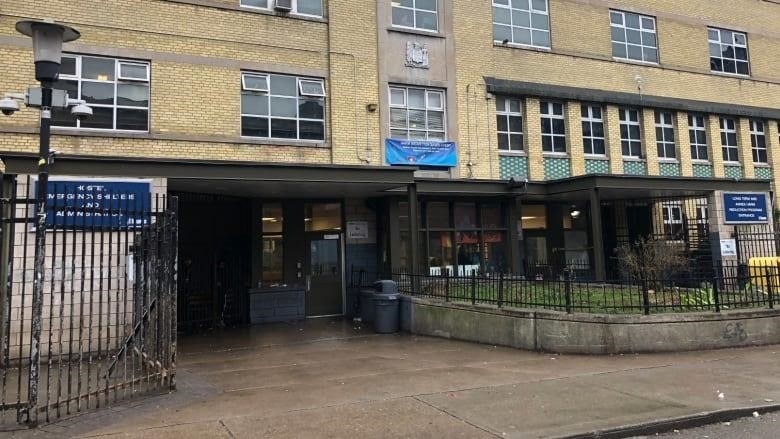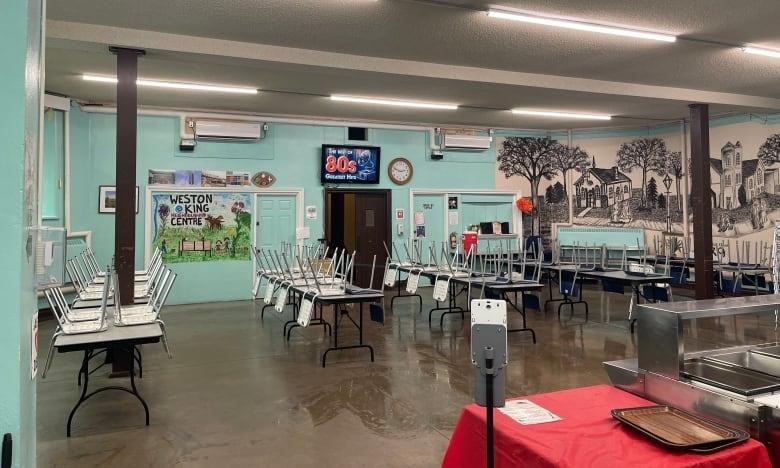
The city says the number is the “highest monthly average recorded” by central intake
In June, homeless shelters in Toronto told an average of 273 people a night that there were no beds available for them. This is a new record high for the city.
Advocates for the homeless told CBC Toronto that they think the number is very worrying and that it may be too low. Many people are asking for more beds in shelters, permanent and cheap housing, an increase in the rates for Ontario Works, and rent control for all new tenants.
The information comes from the city’s central intake, which is a phone service that helps people find emergency shelter, other places to stay the night, and services for the homeless. It can be found on the city’s Shelter System Requests for Referral page, which shows the average number of callers who are “unmatched to shelter” at the end of the day for each month since June 2021.
The “average daily number of unmatched individual callers” reached a new high of 273.5 in June, up from 219.9 in May, when the average first went over 200. After the city said on May 31 that it would send asylum seekers to federal programs and services because its shelter system was full and it wanted more money from Ottawa, the number of people seeking asylum went up.
“Each night, close to 300 people who call looking for a bed are not matched with shelter space. Of these, 45% are refugees,” the city said in an email on Sunday.
“It’s a disgrace,” says an activist
A. J. Withers, an activist who has done a lot of research on Toronto’s shelter system, said that the number is probably higher than what is reported because the city doesn’t count families as “unmatched individual callers.”
They said, “This crisis in the shelter system is getting worse, which is very scary.”

“Every night, there are hundreds of people who can’t get into shelters, and we know that many of them just give up. This number also shows how many people stopped calling. It means that there are a lot of people sleeping outside.
“The city has pretty much given up on its most vulnerable residents. And that’s a shame.”
In an email sent earlier this month, the city said that it has “more shelter beds per capita than any other large Canadian city.” But even though more than 1,000 new shelter beds have been added in the past year, the system is still “at capacity most nights.”
Withers said that the city needs to open about 2,000 shelter beds right away to try to meet the need.
Withers said that people can’t afford to live in the city because of rising rents, lack of rent control for new tenants, rising food prices, and inflation. They also said that all three levels of government are to blame and could do different things to help people without homes.
Tanner says the city may need to add more family shelters
The record-high number of squatters in June happened while the city was trying to help people find places to live. Last week, Black-led groups helped the asylum seekers find safe places to stay, mostly in two churches in North York. As different levels of government fought over funding for shelters, the asylum seekers were sleeping on city sidewalks near a center for homeless people.
In a statement released on Friday, the city said that it had “moved quickly” to find emergency housing for the asylum seekers.The city said it has booked hotel rooms for asylum seekers and is moving them in. This is in response to a request from city council to increase the number of places to stay by 250 people.
The city’s central intake has a separate process, called the family placement process, for families with children who are homeless and don’t have a place to live. Through this process, families can get extra help from Ontario Works and Toronto Employment and Social Services to stay in hotels until a space opens up in a shelter. The city said that it runs 14 family shelter programs and helps more than 2,450 people with shelter and other services.
But Gord Tanner, who is in charge of the city’s Shelter Support and Housing Administration, said that the family shelter system might need to be made bigger.
In Toronto, 10,418 people have been “actively homeless” in the last three months
Tanner told CBC Toronto on July 5 that the city’s shelter system is under more stress than it has ever been. He said that the city has about 9,000 shelter beds and is helping about 170 families in hotels while they wait to get into the shelter system.
Tanner said that the city has long used hotels to help families, whether they are seeking asylum or not. However, to meet the demand, the city may need to invest more in family shelters.
“This is something we’re looking at closely… In many of these situations, children are involved, so we need to be extra careful and do our best to help families in the best way we can.

The city’s Shelter System Flow Data page says that 10,418 people have been “actively homeless” in Toronto in the last three months.
Last week, the federal government said it would give $212 million to the Interim Housing Assistance Program. This program helps provinces and cities cover the costs of temporary housing for asylum seekers by splitting the costs with them. From that amount, 97 million dollars would go to Toronto.
Could also mean ‘life or death’
Mei Wang, an advocate at the Weston King Neighbourhood Centre, a non-profit community center that serves the Weston and Mount Dennis neighborhoods, said on Monday that the number is not surprising.
“It’s been hard calling the central intake for people,” she said. “Since September… things haven’t been great. Sometimes you have to call all day, making three, four, or five calls, and then you might be able to find a bed for someone.”
She said that in some cases, workers who called three times a day for a week for each person still couldn’t get a bed. At that point, she said, they are given sleeping bags and sent to a camp.
“The safety net for the poor is not working. “There’s something wrong here, and I think it’s up to the city and the federal government to fix it,” she said.
Wang said it’s important to point out that homeless people looking for shelter may be trying to get away from abusive situations. If there’s no room in a shelter right away, these people may have to go back to their abusers.
Mayor Olivia Chow talked about her mother’s experience fleeing abuse at a council meeting on Thursday. She said, “We need to give hope to women and children who are experiencing violence now, and one way to give hope is to say that you can recover.”
Wang said, “They may feel like no one else can help them, that they are alone, and that they can’t do anything.”
“It could mean the difference between life and death for some people.”
